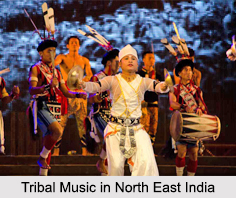 Northeast India is all about music. Music plays an important role in their life. Every man or woman, child or adult, loves to sing or at least to listen to music. Often people speak of the people of the North East India as people with music in their blood. They have rich traditions of orally transmitted folktales in songs. It is their habit to sing while working in the fields, sowing seeds or planting. Nature provides a variety of themes for their songs. They have a large number of songs of various tunes.
Northeast India is all about music. Music plays an important role in their life. Every man or woman, child or adult, loves to sing or at least to listen to music. Often people speak of the people of the North East India as people with music in their blood. They have rich traditions of orally transmitted folktales in songs. It is their habit to sing while working in the fields, sowing seeds or planting. Nature provides a variety of themes for their songs. They have a large number of songs of various tunes.
These songs are usually about wars, history and tales about persons, animals and their deeds in taking heads or founding villages. The songs of the people of the North East can be broadly classified into four groups:
•Love Songs, sung by young boys and girls and generally between young lovers in the morungs or in the field huts. Through the songs, the lovers express their feelings for each other.
•Cradle Songs, speak of the composition of the family, activities of different members of the family, their way of life, the privileged position a child occupies in the family and the expectations the parents have when it grows up.
•Festival Songs, sung in all festivals accompanied with dancing. The themes of the songs are based on the traditions and mythology of the tribe. The main singer who leads the songs takes his position in the middle of the dance party and the others dance around him.
•Ballads, sung while going to the fields or in the jungle. When a group of boys sing these songs in a loud voice addressing some girls at a distance, the girls from the village too reply in songs.
Besides the above mentioned songs, there are others sung at the time of marriage, birth of a child, harvest season and performance of rituals. North East India, which is not only an unexplored paradise on earth but also blessed with natural beauty and a unique culture in music, traditional dance and instruments. The unique style of music of North East India makes it one of the hot spots of music industry in India.





















